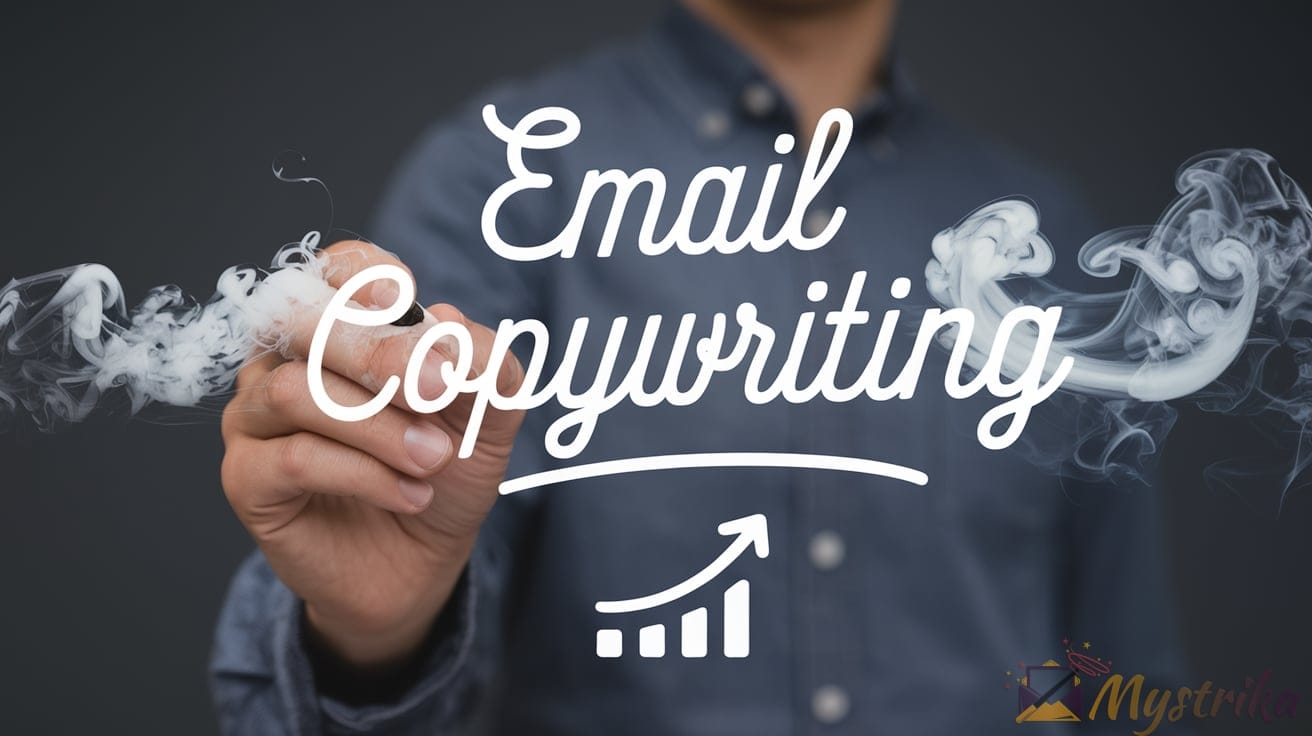Email copywriting is part art, part science. Master both and you’ll have happy subscribers and abundant conversions.
This comprehensive guide distills email copywriting down to 7 core strategies any beginner can start applying right away.
You’ll learn how to:
- Write compelling subject lines optimized for high open rates
- Construct emails with rock-solid calls-to-action
- Continuously refine and improve campaigns using data
- And more
Level up your email copywriting with pro tips for irresistible subject lines, valuable body copy, strategic calls to action, and rigorous optimization.
Understand the Purpose and Components of Effective Emails
Getting started with email copywriting? The first step is understanding what makes an effective email.
Every email you send should have a clear purpose and be crafted carefully to achieve that goal. An email has three key components that work together: the subject line, body content, and call-to-action. Let’s break down the role each part plays.
Identify the Goal of Your Email Campaign
Before you start writing, get crystal clear on what you want the recipient to do after reading your email. Do you want them to:
- Sign up for your newsletter?
- Download an ebook?
- Schedule a sales call?
- Refer a friend?
Understanding your desired action sets the stage for writing copy that convinces readers to convert.
For example, if your goal is to get more newsletter signups, you’ll emphasize the value readers will get from subscribing. Or if you want them to schedule a call, focus on piquing interest in your offering.
It’s tempting to try accomplishing multiple goals in one email, but resist the urge. Emails with a single, well-defined purpose convert up to 50% better. Stay laser-focused.
Recognize the Key Parts of an Email
Every impactful email contains these three components:
Subject Line
The subject line is the headline of your email and the first touchpoint with readers. A good subject line:
- Grabs attention
- Hints at the value inside
- Aligns with the body content
- Incites curiosity
Keep your subject lines short and descriptive. For example:
- “Here’s how we increased sales by 50%”
- “Are you overpaying for shipping?”
Use power words like “secrets”, “challenge”, “warning”, and “how to” to catch the reader’s eye. Asking a question is another great tactic to get them hooked.
Body Content
The body content delivers on the promise of your subject line. Follow these tips when writing your copy:
- Tell a compelling story – Share a relatable experience from your or a customer’s perspective.
- Social proof – Back up claims with data, testimonials, and case studies.
- Give value – Provide original insights, data, tips and resources readers won’t find elsewhere.
- Keep it scannable – Break up text with subheads, bullets, and short paragraphs.
You only have a few seconds to grab attention, so frontload your email with the most important info. Limit body copy to 3-4 concise paragraphs.
Call-to-Action
Every email needs a clear call-to-action (CTA) telling the reader what to do next:
- Sign up
- Learn more
- Start free trial
- Buy now
Write your CTA as a command using action words like “download”, “get started”, and “register”. Make sure it stands out visually by using contrasting colors, buttons, and spacing.
Strategically place your CTA after presenting the offer value. Never include more than one CTA – too many options overwhelm readers.
Bringing It All Together
Let’s look at a sample welcome email that demonstrates these principles:
Subject line: Are you ready to double your productivity?
Hi [name],
Welcome to Acme Consulting! We can’t wait to help you accomplish more in less time.
Our proven framework has helped companies like [social proof] double their output. Clients say our structured approach to time management is like “getting a whole extra day each week.
Are you ready to maximize productivity? Let’s schedule a free 30-minute session to create a custom workflow for your business.
[Book Free Session]
Speak soon,
[Founder Name]
Acme Consulting
This email has:
- Goal: Schedule free consultation call
- Subject: Hooks reader with a compelling promise
- Body: Shares social proof and value of offering upfront
- CTA: Clear call to book complimentary session
When each component works together seamlessly, you have a high-converting email.
Crafting an email with a solid foundation sets you up for success. Taking the time to identify your goal, perfect your subject line, provide value through great content, and direct readers with a specific CTA will get results.
With a clear understanding of effective email structure, you’re ready to implement these strategies and start creating emails that get opens, clicks, and conversions.
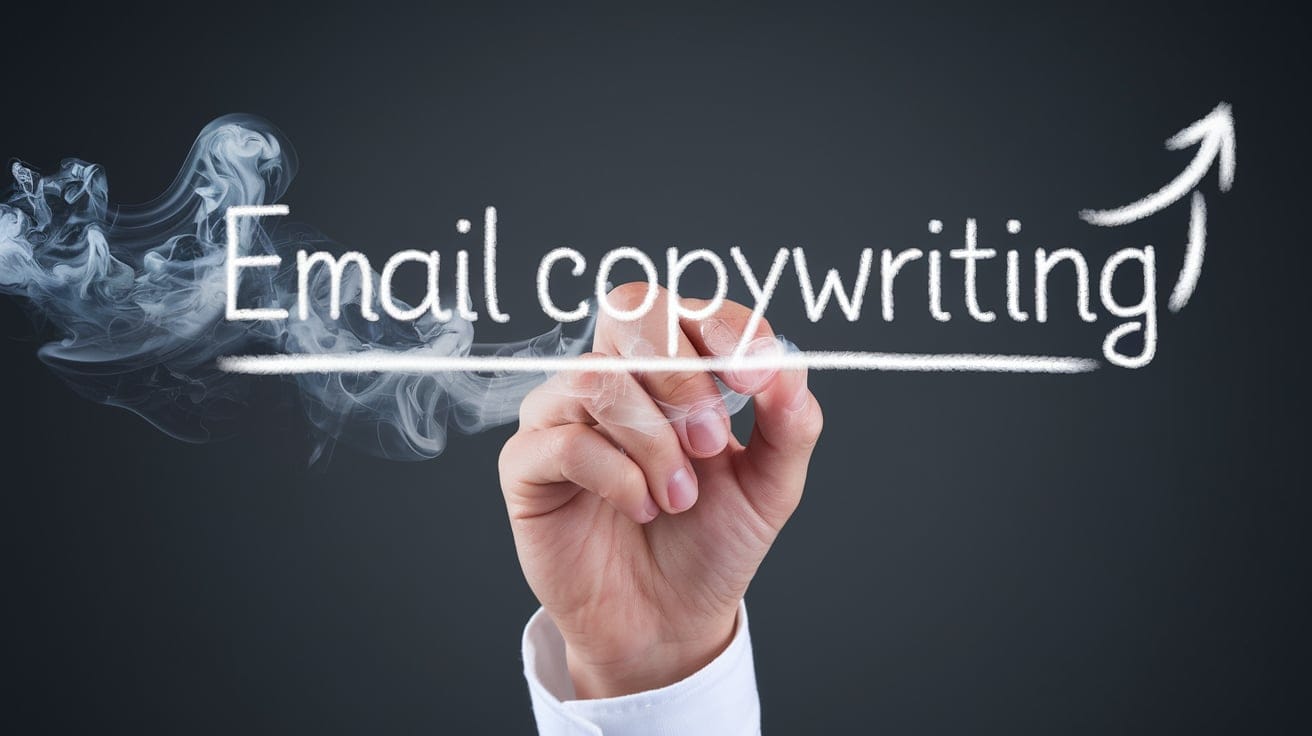
Research Your Target Audience
Want to create emails that convert? Then you need to intimately understand who you’re writing to. The foundation of effective email copywriting is detailed research into your target audience.
Put yourself in your reader’s shoes. What motivates them? What challenges are they facing? Where do they spend their time online? The more you can empathize with your audience, the better your copy will resonate.
Follow these two steps to get crystal clear on the people your emails will reach.
Create Detailed Buyer Personas
A buyer or marketing persona is a semi-fictional representation of your ideal customer. Personas include demographics, behaviors, goals, and pain points. They help you empathize with readers and write convincingly to them.
Start by doing quantitative research:
- Look at customer data like location, age, job title and income level.
- Analyze behavioral data from social media and web analytics.
- Review survey and poll responses.
Then do qualitative research:
- Read through customer interviews and testimonials.
- Find quotes that illustrate desires and challenges.
- Identify trends in what motivates them.
Compile this data into a few core personas. Give each a name, photo, background details, goals and quotes.
For example, an accounting software company might have two main personas:
Tanya, the overwhelmed bookkeeper
- Quote: “I’m wasting hours tracking invoices and receipts manually.”
- Goal: Automate busywork
Amir, the expanding restaurant owner
- Quote: “I can’t afford an in-house accountant right now.”
- Goal: Handle finances without hiring staff
Refer back to these personas as you write emails to remind yourself who you’re addressing.
Understand Their Goals and Pain Points
In addition to demographics, you need to uncover your audience’s goals and pain points. These are the key factors that shape their decision making.
Goals
What does your audience ultimately want to accomplish?
- Save time
- Increase profits
- Reduce risk
- Improve customer experience
Pain points
What problems and frustrations stand in the way of their goals?
- Outdated technology
- Manual workflows
- Information overload
- High costs
Connect your offering directly to your audience’s aspirations and challenges. Show how your product or service will help them reach goals and alleviate pains.
For example, an email from a booking software company might say:
“Tired of losing bookings because your calendar isn’t synced across devices? Our real-time booking software eliminates double-bookings and ensures you never miss a reservation.”
The more clarity you gain about your target audience, the better your emails will resonate. Personas, goals, and pain points should inform every copywriting decision, from content topics to offers.
Audience research is the difference between generic marketing messages and emails that truly speak to the reader. Invest time upfront understanding the people you want to reach through surveys, interviews, and data analysis.
Empathizing with your audience’s worldview makes writing persuasive copy much easier. You’ll know exactly how to capture attention and drive action.
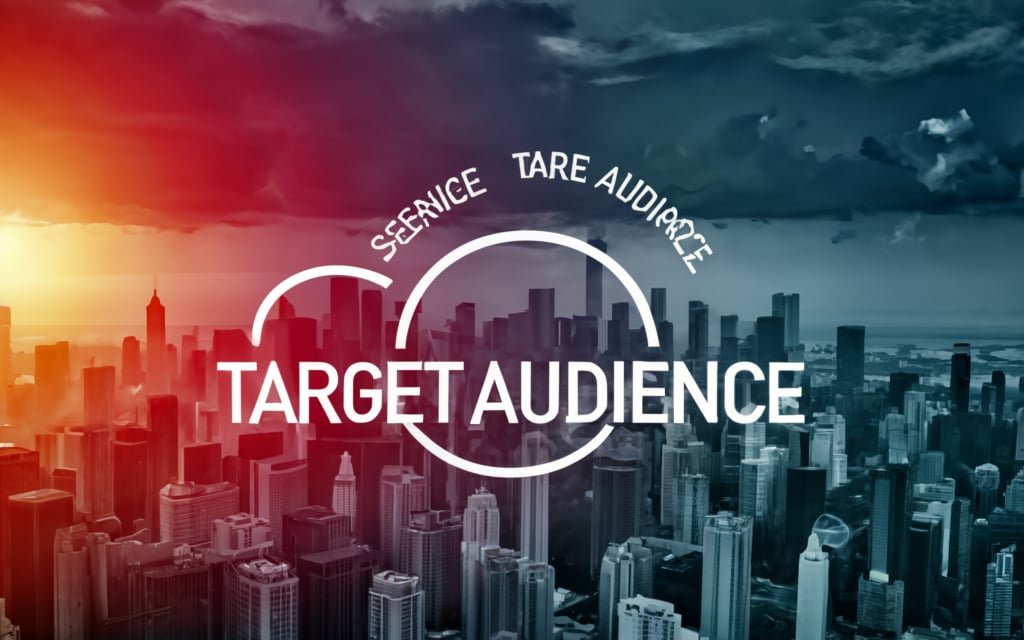
Optimize Your Subject Lines
Your email subject line is prime real estate – make the most of it. Subject lines have the challenging job of grabbing attention amidst an overflowing inbox.
Craft compelling subject lines that stop readers in their tracks and incite them to open your email.
Follow these tips to write killer subject lines:
Keep it Short and Descriptive
Today’s inboxes are crammed. You only have a few precious words to capture interest before getting cut off.
Aim for subject lines between 5-10 words. Anything longer risks getting truncated on mobile.
Be clear about the value proposition. Readers should immediately grasp what the email is about.
Here are examples of concise, descriptive subject lines:
- Finding your dream job in 6 months
- “Is your website losing you customers?”
- “Announcing our new mobile app”
Remove any unnecessary words or fluff. Frontload the subject line with the core info the reader needs to know.
Use Power Words to Grab Attention
Power words are verbs and adjectives that trigger emotion. Use them to give your subject extra oomph.
Here are some of the most potent power words:
- Exclusive
- Instantly
- Guaranteed
- Proven
- Suddenly
- Avoid
- Beware
- Don’t Miss
- Stop
- Before
- Secrets
- Shortcut
- Hack
- Sneak Peek
Sprinkle in power words, but don’t overdo it. For example:
✅ “Find your dream job in 6 months with this exclusive shortcut”
❌ “Guaranteed secrets for finding your dream job instantly”
Power words add punch, but only if used sparingly for maximum effect.
Ask a Question to Hook Readers
Piquing curiosity with a question is a classic subject line tactic. Compelling questions grab attention because we instinctively want answers.
Use questions to highlight reader pain points. For example:
- “Is your website losing you customers?”
- “Struggling with lead generation?”
- “Spending too much time on accounting?”
Or present an aspirational outcome:
- “Ready to double your productivity?”
- “Want to grow your business 5x this year?”
- “Could you use an extra $1000/month?”
Follow curiosity-inducing questions with subject lines that deliver the answer. This two-step approach nurtures readers.
Lines That Convert
Let’s say you run a yoga studio and want to promote a new Chakra-focused class. Try subject lines like:
- Week 1: “Ever felt blocked energetically?”
- Week 2: “Here’s how to balance your Chakras”
- Week 3: “Align your Chakras in just 10 minutes/day”
Each subject line builds interest and leads readers along a journey.
With crowded inboxes, every word counts. Craft irresistible subject lines through brevity, emotional triggers, and strategic questions.
Subject lines convince readers your email is worth opening – so make sure yours are optimized for success. The extra effort is well worth the time.
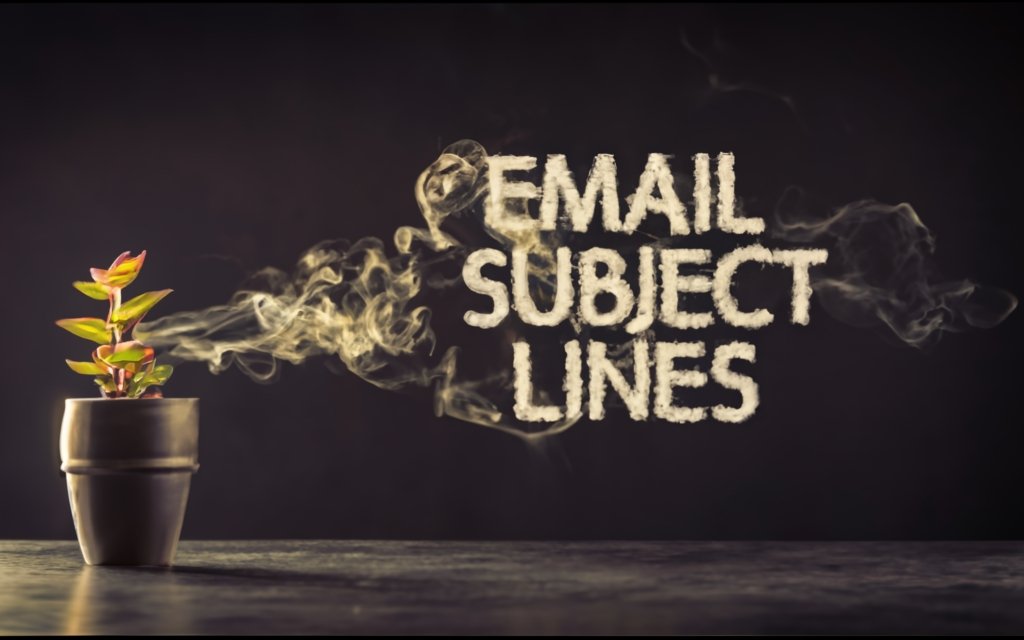
Write Compelling Email Body Content
You’ve caught their eye with the subject line. Now you need email body copy that engages readers and inspires action.
Follow these proven tips to write compelling content that converts:
Tell a Story That Resonates
Human brains are wired for storytelling. When you wrap your message in a narrative, it feels more meaningful on an emotional level.
Share a short anecdote about:
- A customer’s success or “aha moment” after using your product
- How you came up with an idea for your business
- An inspiring company milestone or achievement
Stories create feelings of rapport and bonding with readers. Use vivid details to pull them into the scene. Dialogue and conflict add dramatic flair.
For example, an email from a language learning app might say:
“Maria was struggling to have basic conversations after moving to Germany. She felt isolated and homesick, unable to connect with those around her…
Until she found Languagely. Within months of using our app, Maria made new friends, joined a book club, and even met her eventual husband at the local cafe.
Stories like Maria’s inspire us to create the best language learning experience. We can’t wait to help you thrive in your new home or when traveling abroad!”
Use Data and Social Proof
Back up claims about your product’s value with concrete evidence. Data and social proof address skepticism and build credibility.
Types of convincing stats to include:
- User numbers: “Join our 100,000+ satisfied users”
- Growth metrics: “Grown revenue 300% over the past year”
- Benchmarks: “Clients see 2x more conversions than the industry average”
Social proof demonstrates real results:
- Testimonials: “Helped my business generate 50% more leads each month!”
- Case studies: Show how a customer succeeded
- Reviews: Share excerpts from favorable product reviews
The more you can quantify and prove your offering’s impact, the more persuasive your messaging becomes.
Provide Value With Original Insights
Today’s consumers have endless options for information. To stand out, share something original that readers won’t get anywhere else.
Emails that teach readers something new or provide unique value have higher engagement. Consider providing:
- Exclusive tips: “Here are 3 little-known tricks for…”
- Research data: “In our 2019 survey, we discovered that…”
- Predictions: “Here are 5 website design trends that will dominate next year”
- Checklists: “7 Questions to ask before choosing a marketing agency”
Think what would make someone say, “Wow, I’m glad I opened this!” then deliver that insider intel.
Putting It Together
Here’s how Performa, a fitness app, combines storytelling, proof, and original value in an email promoting personalized workout plans:
“Angela was determined to stick to her New Year’s resolution to get in shape – but struggling to see results using a one-size-fits-all workout program. She’d only lost 2 pounds by April.
That’s when she discovered Performa’s AI-powered customized workout generator. Based on her goals, body type, and schedule, it created a plan tailored to Angela’s needs.
Fast forward to December – Angela has now lost nearly 40 pounds and feels better than ever!
Stories like Angela’s inspire us to keep innovating. Our technology has helped over 50,000 members achieve their ideal body, with an average fat loss of 15 pounds.
This new 5 minute quiz uses AI to create a workout and meal plan guaranteed to help you reach your unique fitness goals. Take the quiz here to get started on the path to your best body!”
Email body copy sets the stage for your CTA. Use compelling stories, rock-solid proof, and value-adding insights to convince readers your solution is the answer.
Craft a Clear Call-to-Action
You’ve set the stage. Now close the deal with a rock-solid call-to-action.
An effective CTA clearly tells your audience their next step. It’s the culmination of everything you want your email to accomplish.
Follow these tips to create CTAs that convert:
Use Action-Focused Language
Your CTA should prompt immediate action using commanding verbs.
Power words to use:
- Start
- Enroll
- Register
- Reserve
- Access
- Download
- Claim
Also leverage FOMO by urging time-sensitive action:
- “Claim your 50% discount – ends today!”
- “Register before spots fill up!”
Here are examples of action-driven CTAs:
- Download the ultimate guide
- Start your free trial
- Register for the webinar
Make it Specific and Relevant
Generic CTAs like “Shop now” don’t provide enough context. Readers need to understand specifically what they’re signing up for.
Tailor your CTA to what was presented in the email. For example:
Email about productivity tips:
- “Get the full productivity toolkit”
Email announcing new yoga class:
- “Sign up for restorative yoga”
Email with PPC case study:
- “See our proven PPC framework”
When your CTA matches the preceding content, it feels like an organic next step rather than an abrupt sales pitch.
Keep it Aligned With Subject Line
There should be a clear throughline connecting your subject line, body content, and CTA.
If your subject line promises to solve a problem, your CTA should present the solution. Or if the subject line offers a lead magnet, the CTA enables downloading it.
Misaligned elements confuse readers. But consistency builds trust and boosts conversions.
For example:
Subject: Struggling with lead generation?
Body: We helped Company XYZ get a 238% increase in leads in just 6 months. Our proven framework combines inbound and outbound strategies…(more details)
CTA: Get Our Complete Lead Gen Toolkit
The CTA neatly aligns with the subject line pain point and body content solution.
Design Tips
In addition to compelling copy, make your CTA stand out visually:
- Use contrasting colors
- Underline the CTA
- Put it in a colored button
- Increase font size
Many email service providers have templates with built-in, stylized CTA sections. Use them to draw the reader’s eye.
Well-executed CTAs seal the deal. They galvanize readers to take your desired action after carefully leading them down the path. With a strategic call-to-action, you’ll send traffic to your site, get more conversions, and grow your business.

Test and Refine Your Emails
You crafted a fantastic email campaign. Now don’t just set it and forget it. To maximize results over time, you need to continuously test and optimize your emails.
Follow these tips to keep improving your email copywriting:
A/B Test Subject Lines and Content
A/B testing lets you experiment to see which version of an email performs best.
Try testing:
- Subject lines – See if questions, urgency, or social proof works better
- Content – Test different offers, stories, headlines
- Send times – Compare open and click rates for different days/times
- Lists – Send variants to different segments of your list
Here’s a sample test comparing two subject lines:
Subject A: “Announcing new yoga retreats!”
Subject B: “Be the first to get details on our new retreats!”
Send Subject A to Group A, and Subject B to Group B. Look at open rates to determine the winner then send that version to your entire list.
A/B testing takes the guesswork out of optimization. Let data guide your decisions.
Analyze Performance Data
Dig into email analytics to identify opportunities for improvement.
Key metrics to track:
- Open rate – Percentage of recipients who opened the email
- Click-through rate – Percentage who clicked links/CTAs
- Conversion rate – Percentage who completed the desired action
- Bounce rate – Percentage of emails that bounced
- Unsubscribe rate – Percentage who unsubscribed
Segment data by factors like audience demographic, send date, content type, and campaign objective. Look for trends and outliers.
These insights pinpoint where your copy is excelling or falling short. Use them to shape ongoing optimization.
Continuously Improve Campaigns
Treat your emails like software – there’s always room for improvement.
Use what you learned from testing and analytics to:
- Refine subject lines and body copy – Keep evolving your messaging
- Improve list segmentation – Send more relevant content
- Remove low performers – Delete consistently low-converting emails from sequences
- Adjust cadence and send times – Find the optimal frequency and days
Ongoing incremental optimization compounds results over time. Don’t get complacent with a campaign that’s doing “okay” – make it great!
For example, if data shows your open rates decline over the course of an 8-email sequence, shorten it to 5 emails. Or if Fridays have 60% higher CTR, send promos on Fridays.
Let data guide your optimization, not guesses.
Never Stop Improving
To recap, keep your emails primed for success by:
- A/B testing versions of copy
- Analyzing performance data
- Using insights to continuously refine and improve
With this scientific approach, your email marketing will keep getting better. Don’t settle for mediocre campaigns – use testing and data to take them to the next level.
Tools and Resources for Email Copywriters
Ready to step up your email copywriting? Here are some top tools and resources to add to your arsenal.
Email Marketing Software
A dedicated email marketing platform helps you execute campaigns at scale. Here are top options to explore:
Mailchimp
The most popular email provider for small businesses. Offers free and paid plans, automations, and great analytics.
Constant Contact
Trusted by marketing agencies to manage client emails. Provides professional templates and marketing integrations.
ConvertKit
Focused on creators, bloggers, and digital product sellers. Excellent for building relationships with subscribers.
Drip
Built for marketers who take email seriously. Advanced segmentation, automation, and analytics capabilities.
Klaviyo
Powerful tool for ecommerce brands to drive sales through email and SMS. Highly customizable.
Look for providers that integrate with your CRM, offer A/B testing, and provide detailed analytics on opens, clicks, and conversions.
Deliverability Tools
Ensure your hard work gets to the inbox with deliverability tools:
MailTester
Test email renderability, spam score, and security for free. Identify potential issues.
MailboxValidator
Bulk validate email addresses to maintain list accuracy and avoid bounces.
Sender
Monitor ISP complaint rates, blocklist rankings, and other mailbox provider metrics.
250ok
Track email engagement and diagnose deliverability problems. Integrates with top ESPs.
By proactively optimizing deliverability, you can increase open rates by 15% or more.
Content Ideas and Inspiration
Creative block? Turn to these resources to spark ideas:
Really Good Emails
Browse real examples from leading companies across industries.
SwipeFiles
Search drag-and-drop email templates by category.
Helprace Blog
Valuable tips and examples in the Email Marketing section.
Retention Science Blog
Marketing insights from behavioral data on 75M+ users.
Top Ten Reviews
Reviews of email marketing software and service providers.
Reading examples from successful brands in your niche is a great way to get inspired. Then put your own spin on proven formulas.
The right tools and resources help you save time, avoid critical mistakes, and create better email campaigns. Invest in the support you need to confidently grow your email copywriting skills.
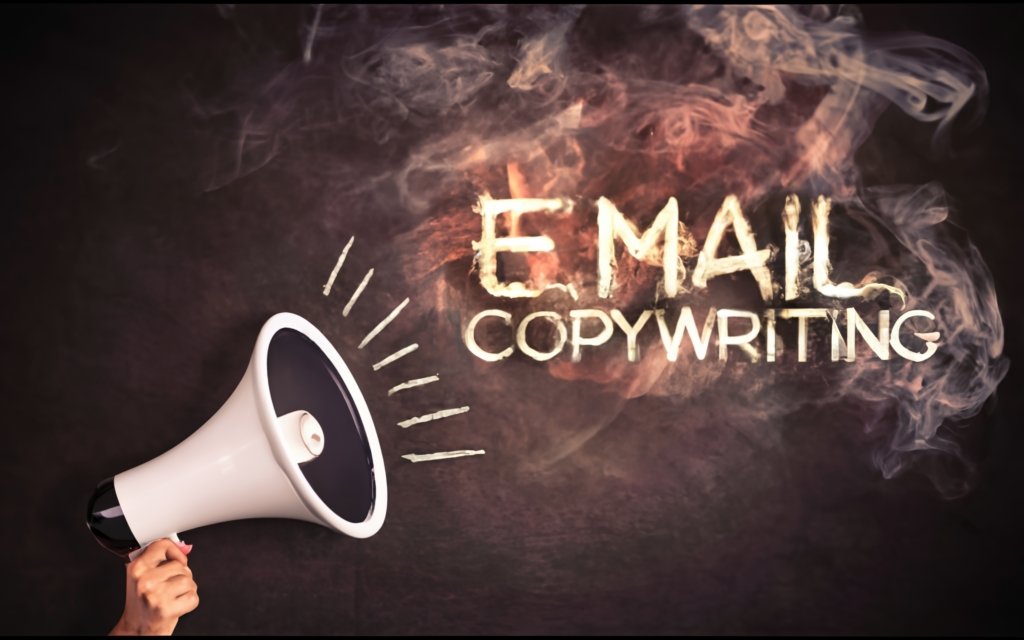
Key Takeaways for Getting Started with Email Copywriting
Email copywriting is crucial for engaging your audience, whether you want to drive sales, get more newsletter signups, increase event registrations, or any other goal.
To recap how to excel at email copywriting:
- Understand your audience. Research buyer personas, pain points, and goals to write relevant copy.
- Perfect your subject lines. Use brevity, power words, and strategic questions to compel opens.
- Provide value in the body copy. Share stories, data, and original insights readers crave.
- Create clear CTAs. Use commanding language and align with subject line promise.
- Continuously test and refine. A/B test elements and analyze data to optimize continually.
- Leverage the right tools. Email service providers, deliverability tools, and inspirational resources help execute more effectively.
With a subscriber-first mentality, embracing testing, and constantly improving based on data, your email copywriting skills will reach new heights. Deliver real value through your emails to build loyalty and exceed your marketing goals.
Frequently Asked Questions
How long should an email be?
Keep emails concise at 3-5 sentences or around 50-100 words. Avoid lengthy emails that will overwhelm readers – get right to the point.
How many CTAs should you include?
Limit yourself to one CTA per email. Multiple CTAs confuse readers and reduce conversions.
What’s a good email open rate?
The average open rate is 15-25%. Anything above 30% is considered high. Strive for at least 25% open rates.
Should you personalize email copy?
Yes, personalized emails have higher open and click-through rates. Include the recipient’s first name, company, location or other details.
How often should you send emails?
It depends on your audience and goals, but 1-2 emails per week is fairly standard for newsletters. Avoid sending too many emails that could annoy recipients.
What tools do you need?
A dedicated email service provider and deliverability monitoring service are essential. Also leverage email copywriting inspiration sites.
How can you improve deliverability?
Proactively validate email addresses, monitor blacklist status, analyze spam test results, and optimize content. This boosts inbox placement.
Should you A/B test emails?
Yes, A/B test subject lines, content, designs, and other elements to find the highest-converting versions based on data.
Testing and optimizing your email copywriting will directly impact your results. With a subscriber-focused mindset and data-driven approach, you can engage audiences in a meaningful way.

